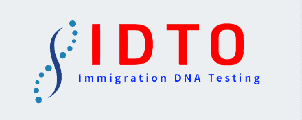Can DNA Test a tell which brother is the father?
Yes. A DNA test can determine which brother is the biological father of a child. Every child has genetic contributions (46 chromosomes) 23 chromosomes from the mother and 23 chromosomes from the father. If two brothers share both parents, a paternity test with both siblings and the child can be performed or, one brother at a time can be performed. Either scenario can help determine the biological father of the child. This of course is assuming the two brothers are the only possible fathers.
It should be noted that it is always recommended to have the mother of the child participate in the DNA paternity testing process. Having the mother involved with your paternity helps increase the accuracy of your result.
Can a paternity test determine which brother is the father if the brothers share one common parent?
Yes. If half-sibling brothers share a common parent. A paternity test can be used to help determine who the paternal father of the child is. As stated earlier in this post. We recommend that the biological mother of the child participate in the DNA testing process. The mother’s involvement helps increase the accuracy of your paternity test.
A paternity test for this option can be performed with both alleged fathers (brothers) with the child at the same time or, each father can be tested separately. Please note, the cost of your DNA paternity test may be more expensive if the alleged fathers (brothers) are tested separately. This is something that should be considered if the first brother who is tested is shown not to be the biological father of a child. If you would like to discuss your specific scenario or schedule a paternity test appointment today. Please contact our office at 877-680-5800 to get started.
Can a paternity test distinguish between identical twins?
No. Because identical twins have the majority of the same DNA. It is currently difficult for a paternity test to determine which identical twin is the biological father.
Some resources may refer people to explore epigenetic analysis. Epigenetic analysis involves the detection and quantification of these epigenetic modifications and their effects on gene expression. It can be used to study various biological processes, such as development, aging, and disease.
There are several studies with identical twins that show 65% of identical twins have the same epigenetic profile. While 35% of identical twins show variations in their epigenetic profile. What this basically means, epigenetic analysis is an option that is not widely available to public and there is no information available that it would help with paternity determination.
Can a DNA test determine if siblings have the same father?
Yes. A half sibling DNA test including the mother will more effectively determine if two sibling share the same biological father.

